Socceroo origins: Every local club of the Australian FIFA World Cup players
During the World Cup the Socceroos will be Australian superheroes. Like all heroes, they need a good origin story. We track the junior steps of each of the 26 soccer stars wearing the green and gold.
Blacktown
Don't miss out on the headlines from Blacktown. Followed categories will be added to My News.
The modern-day Socceroos are taking on the world in the FIFA World Cup.
As they grace the international stage it is worth remembering their humble origins - kicking balls into backyard nets and learning their early skills in small, local soccer clubs across the country.
Of the 26 Socceroos squad members in Qatar, nine are from New South Wales, seven from Victoria, four from South Australia, four from overseas, one from Queensland and one from Tasmania.
We take a look at the origins of every player and track their path to Qatar.
Goalkeepers
Mat Ryan – Blacktown City, NSW
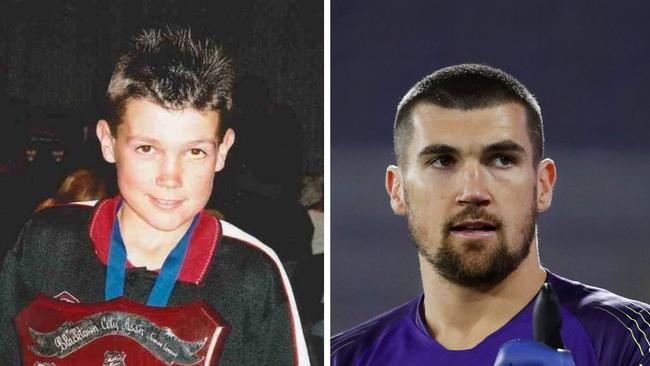
Amid an era of rapid change, the Socceroos’ skipper has been a rock in between the goals for the national team, an almost automatic selection over the past decade during which he has racked up more than 70 caps.
But while he might seem like a constant, it wasn’t always clear that Ryan was going to make it, even as a junior coming through the ranks at Blacktown City - remarkably, one of five current Socceroos from the western Sydney club.
“The thing with Maty Ryan is that he was no guarantee,” says Mark Crittenden, Blacktown City’s first grade coach and Ryan’s mentor as a junior.
After Ryan’s side won the premiership in the under 14s, Crittenden took the reins for the following season.
“Maty wasn’t overly tall at the time and probably wasn’t guaranteed his shirt for the year. But I guess the thing for me about Maty Ryan is that he was, number one, very dedicated. Even as a youngster he was very driven.
“While some might have thought that he was a bit small and that his feet weren’t great, there was just something about his attitude. I always thought even at that age that he’d end up being a leader.”
Throughout the pre-season, Crittenden put the young Ryan well and truly through his paces, making the keeper do the same drills as the outfield players in order to improve his touch on the ball.
“He just took it on board, never said a word, never whinged, never moaned – he knew that he had to work on it. But once again, he just got the job done. The ultimate pro, even as a youngster – he just worked hard.”
The hard work certainly paid off.
After breaking through into first grade at Blacktown City, and then making his professional debut with the Central Coast Mariners in the A-League, Ryan has gone on to carve out a hugely successful career in Europe, playing for the likes of Club Brugge in Belgium, Spain’s Valencia, Brighton in the English Premier League and a loan stint at his childhood favourites, Arsenal.
And on November 23, he will lead the Socceroos in what will be his third world cup.
“He always strived to be at the front and to be a winner,” says Crittenden. “I think that’s one of the things I loved about him and it’s probably one of the reasons why it was mostly my decision to keep him on board – and thank god we did!”
Andrew Redmayne – Gosford City, NSW
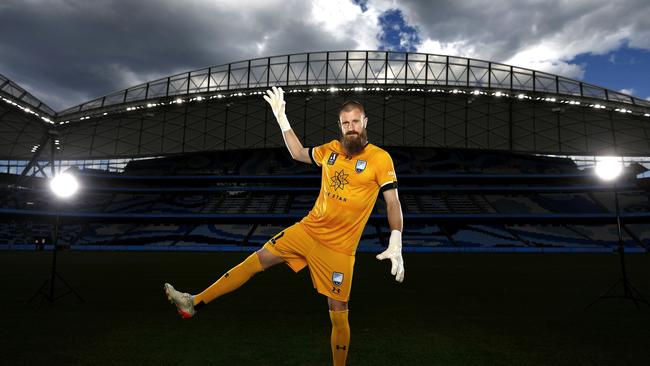
Little known among casual football observers before June, Redmayne’s theatrical heroics in the penalty shootout qualification win against Peru ensured that he will go down in Socceroos’ history as one of Australian football’s greatest cult figures.
Sporting a Ned Kelly-esque beard, Redmayne, who was only subbed on one minute before the shootout, danced and pranced along his goal line to ultimately save the decisive penalty from Peru’s Alex Valera and send the Socceroos to Qatar.
But long before he was known as the ‘Grey Wiggle’, the Central Coast lad was a junior at his local club Gosford City, where he played for five years before joining the Central Coast rep system.
Redmayne continued to impress and found himself at the NSW Institute of Sport, where Kelly Cross and current Socceroos goalkeeper coach John Crawley ran their eyes over the young keeper.
“You could see that there was obviously talent here, but he’s wasn’t faultless,” says Cross. “He was incredibly brave, he was agile, very hard-working – we could work him hard and he’d ask for more – and he was a good size.”
Cross didn’t just give him a good workout while at NSWIS. He says he also bestowed Redmayne’s longstanding nickname, ‘Redders’, upon him.
“The nickname ‘Redders’ was my idea,” says Cross. “There was an old English comedy series called Only Fools and Horses. One of the characters in that is called ‘Rodders’, his name’s Rodney. So I went with ‘Redders’ and it stuck.”
In an example of how football careers can be victim to sliding doors moments, Redmayne found himself on the wish list of English Premier League giant Arsenal after having a blinder in a game against the club during a tour of Europe.
“Maybe three or six months later they (Arsenal) said, ‘We’ve got an international tournament, it’s in Hong Kong, we’d like Andrew to come over,’” said Cross.
“But then not long before he was about to fly over to this tournament Arsenal called and said, ‘Sorry, we’re going for another guy, we’re only allowed a certain amount of foreign goalkeepers.’ So they took (longtime Arsenal keeper Wojciech) Szczęsny instead!” he laughs.
“But they were tossing up between Redders and Szczęsny back then.”
Instead of lining up for Arsenal in the bright lights of the English Premier League, Redmayne found himself sitting on the bench for much of his early career.
In his first four seasons as a professional, at the Central Coast Mariners and Brisbane Roar, Redmayne managed just four games of competitive football.
It was only with a tonne of patience and a change of club, to Melbourne City and then onwards to Western Sydney and Sydney FC, that ‘Redders’ came into Socceroos contention.
And while it is expected that he’ll fill the role of third keeper in Qatar, the Grey Wiggle from Gosford could well be the joker up coach Graham Arnold’s sleeve should the Socceroos face some penalties that need saving.
Danny Vukovic – St Clair United, NSW

We all know Danny Vukovic as a goalkeeper. In fact, a very fine one who has carved out an incredible career in both the A-League and abroad. But if it wasn’t for a very persistent junior coach, Vukovic might have been better known for banging in the goals rather than stopping them – or perhaps not so well known at all.
“He is a goalkeeper, as we all know, but when I had him he was a striker – or he thought he was a striker as a junior,” says John Ioannou, who coached Vukovic from the under 9s to the under 12s at St Clair United in Sydney’s west.
“He hated playing goalkeeper. We had the usual 10-year-old tears, ‘I wanna be a striker, I don’t wanna be put in goals.’”
Despite the protestations, Ioannou persisted, seeing something in the young Vukovic whenever he was between the sticks.
“The only way that I could keep everybody happy was to get them to share goalkeeping, so they’d play half a game each in goals and Danny gets a chance to play striker as well. Mind you, he did well there too. But you could just tell that with his hands, the technique was already starting to show without even having been coached as a keeper.”
Eventually, the tears and the protestations stopped, and Vukovic accepted his fate as a goalkeeper.
He left St Clair United to play in rep teams for Nepean, as a number one, and then moved onto Bonnyrigg to play in what was known as the NSW Premier League before launching his almost 20-year professional career that has seen him play in both the NSL and A-League, as well as a highly successful four-year stint with Belgian powerhouse club Genk.
Vukovic might have conquered the world in football, but it’s clear that he hasn’t forgotten where it all began.
“The actual young man, I have nothing but praise for him, because even after he made it he’d still drop in whenever he was back in Australia, say hello to the kids, give away gloves, kits, shirts,” says Ioannou. “We all think the world of him, he’s a gentleman. And to this day, when I see him he’ll come over and say, ‘Hey coach!’ and give me a cuddle.”
Defenders
Nathaniel Atkinson – Riverside Olympic, Tasmania

While all players will have the support of their families, friends and junior clubs when lining up in Qatar, Socceroos defender Nathaniel Atkinson will have a whole state behind him as he becomes the first Tasmanian to go to a men’s World Cup.
Born in Launceston, the 23-year-old grew up playing for local club Riverside Olympic, an organisation deeply connected with his family, with his grandmother, mother, uncle and brothers all key supporters or players of the club.
“There might have been players who were equally talented on the ball, but his recovery runs, which you notice when he’s playing right fullback today, were exceptional as a junior, and that’s what was noticed,” says Riverside Olympic’s president Brian Wightman.
“His tenacity, his determination, his endurance and his ability to commit to those recovery runs – that’s what set him apart.”
After progressing through Riverside’s junior ranks until he was 15, Atkinson then set about making the arduous journey to professional football for a Tasmanian. He was selected in Football Tasmania’s representative system before being signed by A-League club Melbourne City, where he enjoyed a five-year spell.
“The difference is his desire. His desire to improve and his desire to be the best he could be. He was a very quiet and, you might say, shy lad but he was always extremely driven to achieve the goals and become a professional football player,” says Wightman.
“It’s a difficult road for Tasmanian footballers but Nathaniel is the shining light for football in Tasmania.”
Atkinson has since moved on again, signing for Scottish club Hearts earlier this year. In what has been a big 2022, he also made his debut for the Socceroos, playing a key part in the team’s qualification play-off victories over the UAE and Peru.
And while all Socceroos will be heroes to those back home one way or another, you get the sense that Atkinson’s cape will be extra shiny for those watching on in Tassie.
“Everyone claims Nathaniel, whether it’s Football Tasmania or supporters of football across Tasmania, and that’s absolutely tremendous,” says Wightman. “But for Riverside and for the north of the state, this is as big as it gets. To have someone who played all his junior football here until the age of 15 at a local club in Tasmania make it onto the world stage and be part of a squad at a world cup, is nothing short of inspirational, but is also unbelievable.”
Aziz Behich – Meadow Park, Victoria
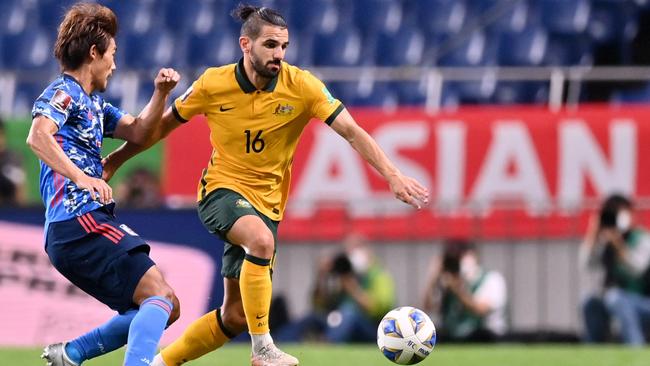
Behich started his football journey with Meadow Park before moving to Green Gully when he was 15. He spent three seasons at Green gully where he was promoted to play in the club’s reserve team at age 17.
In the same year in 2008, he spent time overseas training with the David Beckham Academy. When he arrived back in Australia, he was called up to the Green Gully senior team where he made 11 appearances in the season.
In one game he scored two goals in two minutes coming off the bench in the senior side against Faulkner Blues. After the season he was picked up by Melbourne Victory and played in their youth team before going on to have a full-time professional career.
Miloš Degenek – Blacktown City, NSW

In a Socceroos squad full of stories of those fleeing persecution and overcoming adversity to search for a better life, the defender’s story is one of the more tumultuous in Australian football.
Born in 1994 to Serbian parents in Knin, in what is now part of Croatia, Degenek and his family fled the Yugoslav War and moved to Belgrade when he was a baby. Just when they thought they were safe, a couple of years later the young Miloš then had to endure nights bunkered down amid NATO bombing of the then Yugoslavian capital.
Eventually, the family emigrated to Sydney in 2000, with Degenek having experienced more in his six years than many do in a lifetime.
But once on the football pitch, Degenek showed an incredible amount of steel that has driven his career.
“He’s one that had massive ambitions as a baby to go as far as he could,” says Mark Crittenden, who coached Degenek as a junior at Blacktown City. “He wanted to go overseas, wanted to be a footballer. He had that ambition and drive from day one.”
After Blacktown, Degenek also spent time at Bonnyrigg White Eagles and then at the AIS, before travelling back to Europe as a 16-year-old, when he signed on with German Bundesliga club Stuttgart.
After a couple of seasons with the club’s second team he moved onto German second division club 1860 Munich, then to Japan with Yokohama F. Marinos, famously overlapping with Ange Postecoglou before returning to the scene of much of his early life, Belgrade, with powerhouse club Red Star.
As is the nature of modern football, Degenek has moved on again, and is currently plying his trade with Columbus Crew in America’s MLS.
Looking back, when Crittenden reflects about what sticks in his mind about Degenek, it’s clear that they are values that show someone who is incredibly grateful for all that he has in life.
“He was very driven. Again, nothing was too hard for him. Never whinged, never moaned – always got on with it.”
Thomas Deng - Adelaide Blue Eagles, South Australia
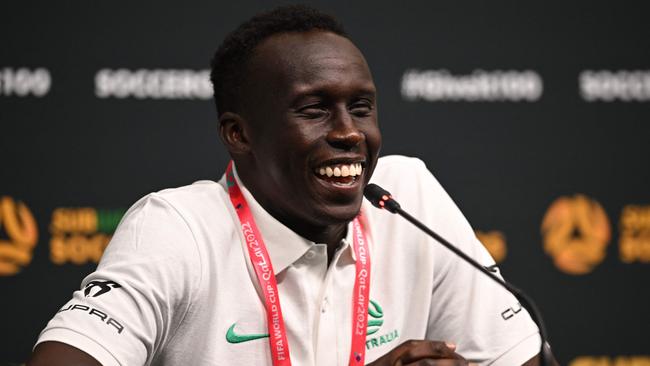
Born into a family of South Sudanese refugees in Nairobi, Kenya, Thomas Deng moved to Adelaide as a six-year-old in 2003.
Deng’s first club was Adelaide Blue Eagles, where he played with fellow refugee and Socceroo teammate Awer Mabil.
His junior coach and supporter Vojo Gluscevic recalls driving Deng to training sessions as nurturing his talent. “I saw that he was a good player and I pushed him, driving him around to training sessions because he was in Australia as a refugee and needed support,” Gluscevic said.
At the beginning Deng would take the bus to training sessions although he would arrive late sometimes and when his coach Gluscevic noticed, he began to drive him around.
Like Deng, Gluscevic came to Australia from overseas but in earlier years in the 1990s from Serbia. The pair now catch up for coffees when Deng is in Adelaide.
After a few years at Adelaide Blue Eagles, Deng and his family then moved to Melbourne in 2011 where he went on to make his senior debut for Western Eagles two years later as a 16-year-old.
Deng then moved to nearby NPL club Green Gully where he was recruited to play in the club’s under 20s side as a 17-year-old. In his first season, he quickly climbed up the ranks and made 13 first team appearances in the senior side. The following season in 2015 he was picked up by A-leagues club Melbourne Victory.
Fran Karačić - Zagreb, Croatia
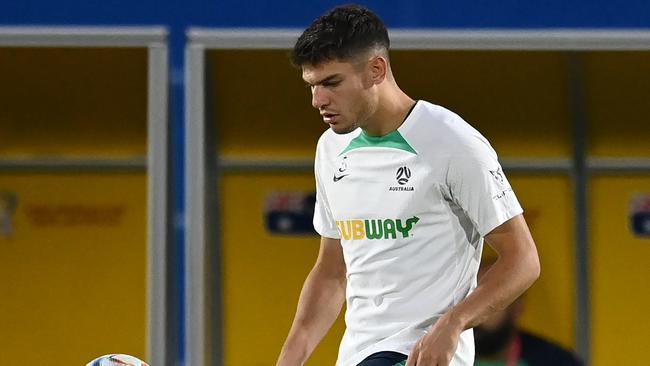
Karačić’s father was born in Australia which cleared the Croatian-born footballer to play for the Socceroos.
In May 2018, FIFA officially cleared him to play prior to the 2018 World Cup in Russia.
He started his football journey with Kustošija, a club founded in 1929 in Zagreb, Croatia.
He then spent time playing for NK Zagreb before moving to Lokomotiva who he played with from 2012 to 2016.
Karačić went on to play for Lokomotiva professionally where he featured in 103 games for the club between 2015 and 2020.
Joel King – Shellharbour Junior Football Club, NSW

Aside from Garang Kuol, perhaps none of the Socceroos have experienced a rise as rapid as left back Joel King.
Remarkably, the 22-year-old hadn’t even made his A-League debut by the time of the last world cup. But now the left back, who plays his club football for Danish Superliga outfit Odense Boldklub, finds himself with the squad in Qatar.
While it might seem like a meteoric rise for some, Zoran Jovanovski, the president of the Shellharbour Junior Football Club throughout the 2000s, isn’t surprised to see King, who he remembers as a “bright little four-year-old”, on the global stage.
“Joel was like a little sponge,” he says. “I know it’s a cliché, but the way he was moving around the park and playing with the ball from an early age, you could just see that something fantastic was going to happen for this kid. For me, it is no surprise to see him where he is.”
Under the auspices of Football NSW, Jovanovski ran a technical skills program at Shellharbour, and saw King develop from the ages of five to nine.
“There was something about him, and he was a left-footer. There’s a photo of him dribbling with the ball and you can just see his stature on the ball and how he’s moving and you thought, ‘Wow, there’s something about this kid, he’s got some talent.’
“We used to play him up, minimum two age groups above, just to challenge him.”
In fact, King took part in the P22 program, which sought to identify talented kids earmarked to represent Australia at the 2022 FIFA World Cup.
After making his debut for Sydney FC against the Newcastle Jets in April 2019, King’s career has been a story of major successes.
In his first full season in the first team he was instrumental in Sydney winning the minor and major premiership double. Then, in the following season, 2020-21, King was named the A-League Young Player and the Year, and then went on to represent Australia at the Tokyo Olympics.
In January he then became Socceroo #615 in a World Cup qualifier against Vietnam and now he’s with the national team at the World Cup, none of which surprises his junior coach.
“The way he plays now, I can close my eyes and it takes me back to when he was six years old,” says Jovanovski. “His touch on the ball, his movement with the ball, the vision that he had even as a young kid.”
Kye Rowles – Palm Beach, Queensland
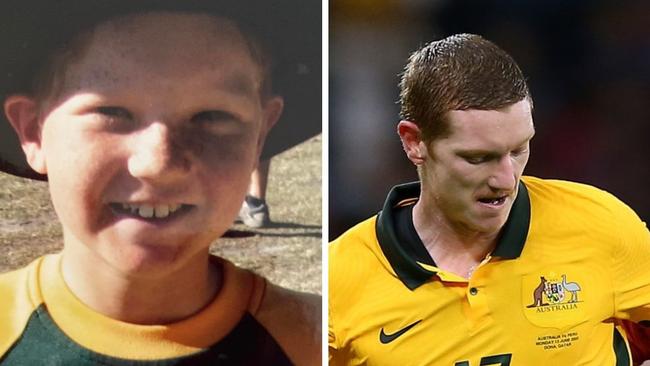
With some kids, it also seems like a fait accompli that they’ll go on to the highest level.
This was the sense that Neil Finnegan had when he first laid eyes on a five-year-old Kye Rowles running around at the Palm Beach Soccer Club on the Gold Coast.
“He was always the best on the park. He was an all-round kid: he could attack, he could defend, he read the play really well,” says Finnegan, who coached Rowles between the ages of five and 11. “But not only that, as much as he was an individual on the park, he was a team player as well. He was happy for other people’s success as much as his own.”
Rowles has been one of the Socceroos’ unsung heroes in recent times, seemingly coming out of obscurity to start – and star – for the team in the centre of defence during the sudden-death World Cup qualifiers against the UAE and Peru in June.
While his selection (and performances) might have shocked a few people, it certainly didn’t surprise his junior coach.
“He’s a real driven lad. Never left anything to question, always backed himself and was very dependable. First of all, he just loved the game, and he just wanted to be the best that he possibly could,” says Finnegan.
“He always had a winning mentality, sometimes where it close to being obsessive, that he just had to win.”
Since those qualifiers Rowles’ career has mirrored the Socceroos’ fortunes. On June 9, one day after helping the Socceroos to the World Cup, Rowles became the third Aussie – alongside Socceroos’ teammates Nathaniel Atkinson and Cammy Devlin – to sign for Scottish side Hearts.
And with the first game against France fast approaching, the 24-year-old is a fair chance to hold his spot in the starting side as the Socceroos try to tame the likes of global superstars Kylian Mbappe, Karim Benzema and Antoine Griezmann.
“Of all the kids I’ve coached, and I’ve been coaching at Palm Beach for 22 years, he’s the one that was always going to go the furthest,” says Finnegan. “Kye was always the standout. Put it this way, if he wasn’t going to make it, then none of them would!”
Harry Souttar - Brechin, Scotland
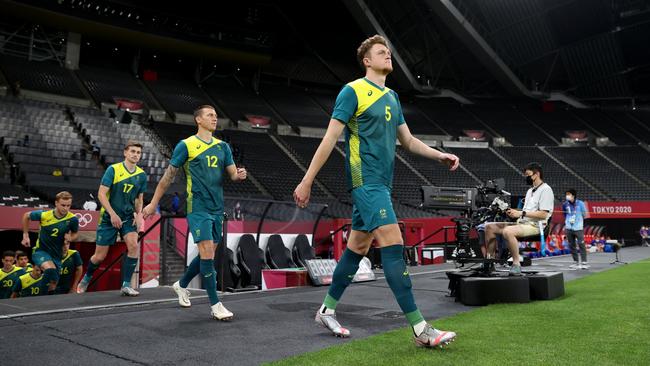
Born in Scotland, Souttar began his youth career with Brechin City Boys Club and spent plenty of time with his older brother John who also went on to become a professional footballer.
Harry was attached to Celtics before he went on to begin his journey as a professional career with Dundee United.
Souttar spent two years with the club as a youth player from 2013 to 2015 before playing in the senior team in from 2015.
Bailey Wright - Langwarrin, Victoria

Before earning selection for the Victorian state team in 2007, Wright spent his formative years with Langwarrin before moving to play a season each with Mornington and Dandenong Thunder.
After Victorian selection he continued to develop his skills with the Victorian Institute of Sport before moving overseas in July 2009 as a 17-year-old, signing a two-year scholarship with Preston North End.
Midfielders
Keanu Baccus – Parklea FC, NSW
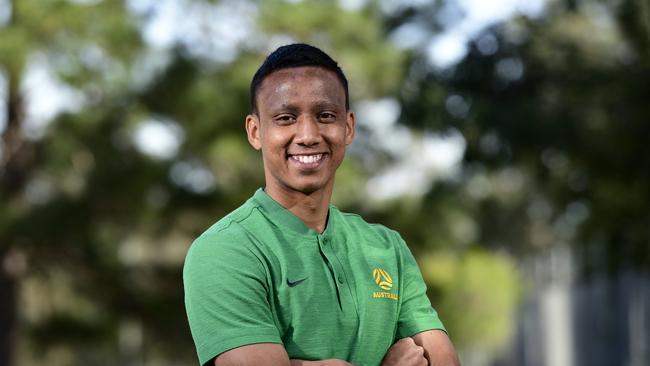
Another player from the football heartland that is western Sydney, Durban-born Baccus started his football with Parklea FC before moving to Blacktown City at 13. He is one of five former Blacktown players in the current Socceroos squad, and one of four to have been coached by Mark Crittenden.
The younger brother of Macarthur FC midfielder Kearyn, who himself has enjoyed a decade-long career in the A-League and South Africa’s Premier Soccer League, Keanu was one that caught the coaches’ attention right from the beginning.
“Keanu was always really light on his feet, moves nicely, puts himself about – and always did,” says Crittenden.
“He was one of those players you looked at and thought, ‘He could become something.’ When you watched him coming up through the grades I think we all thought that he was who could definitely go on and make a career out of it.”
After impressing while rising up the system at Blacktown, Baccus was signed by the Western Sydney Wanderers.
After making his debut for the club in 2016 he quickly established himself as a regular, and earlier this year secured a move to Scottish club St Mirren, joining the plethora of Aussies plying their trade in the country, which of course doesn’t surprise Crittenden one bit.
“He was very good on the football, nice mover, great person, great family, and I guess he was one who we thought had a better chance of going on to achieve something than some of the others,” he said.
Cameron Devlin – Sutherland Sharks, NSW

At just 170 centimetres, Cameron Devlin is the living, breathing, kicking personification of someone who punches well above their own weight.
But before he was getting stuck into some of the world’s toughest players in the Scottish Premier League, in what is considered one of the most physical leagues in the world, the 24-year-old centre midfielder was terrorising kids on football pitches all across Sydney’s Sutherland Shire.
“He was always a good kid. He was one of the kids who I thought had the potential to make it,” says John Long, Devlin’s junior coach at the Sutherland Sharks from under 13s through to under 15s.
“He was very passionate, he’d always be the one who was most upset after a game if we’d lost, especially if it was an important game like a final or something. That passion was always good, and you can still see that in the way he plays now.”
While Devlin has won plaudits both at home and abroad for his fitness and physicality, Long says he witnessed his much celebrated style of play long before the world did.
“We actually had to hold him back. He got a couple of red cards from memory over the years, but as long as he controls that and uses it in the right way, it’s a very good part of his game. As such a small player he needs to add that little bit of mongrel, which certainly helps him win the ball in midfield.”
Devlin is one of a number of young Socceroos who have experienced a rapid rise in recent years. After debuting for the Sutherland Sharks’ first grade side at 16 in the NSW NPL1, Devlin then spent time with the Western Sydney Wanderers youth system before making his A-League debut for Sydney FC.
From there, he moved onto the Wellington Phoenix, where he became a first team regular, and then last year secured a dream move to Scottish club Hearts, where he has been quick to win over the locals with his performances.
“That’s the thing with Cammy: if you keep moving the bar a little bit out of his reach, he’ll work his arse off to make he gets there and can handle it, then go to the next level again,” says Long. “He was always one of the first to training, he’d always be working hard, he always asked questions, wanted to know what he needed to do to get better, so he was always a pleasure to coach.”
“Most of it was driven by his own desire, passion and love for the game, and wanting to be, if not the best player, one of the best players, and to continue improve everything he did on the field. And he just loves winning!”
Jackson Irvine – Ringwood City, Victoria
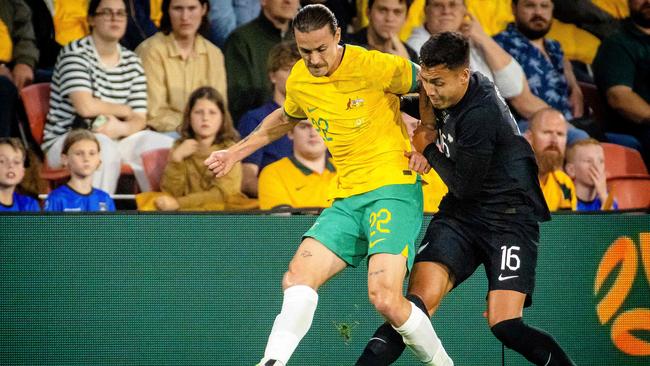
Irvine began his soccer career with Ringwood City where he played for three years before moving to Knox City in 2003.
The Melbourne-born footballer met fellow future national team player Curtis Good at age 10 who lived two minutes away and attended the same school, The Knox School.
Irvine also played juniors with Good at Knox City from 2003 to 2006. He then finished his juniors with Endeavour United and Richmond. In his first season of senior football in 2009, Irvine won the Frankston Pines player of the year award as a 16-year-old.
Ajdin Hrustic – Heatherton United, Victoria

Born in Dandenong, Victoria, Hrustic played six seasons in Victoria before moving overseas at age 14 to continue his football pursuits.
He began with Heatherton United as an eight-year-old where he played for four seasons and used to have sessions with the club’s senior coach Dragan Blazevski before he trained his team.
Heatherton United president Heco said he had “natural talent” and “you just knew he was going to be something.”
He also said that “everyone knew” Hrustic was “very skillful and he could just run around players no problem and score goals for fun.”
Heco mentioned that Hrustic’s younger brother Adin was “a good player as well.”
After his time at Heatherton United Ajdin spent two years at South Melbourne and then played at Sandringham before the family moved overseas to Nottingham Forest in 2010.
Hrustic then played for Austria Wien in 2011.
In the next season, he played for Schalke 04 in a German Football League where he spent two years.
In 2014 he moved to Dutch club Groningen where he finished his youth career and then made it into the senior team where he made his professional debut as a 17-year-old.
Riley McGree – Gawler Eagles, South Australia
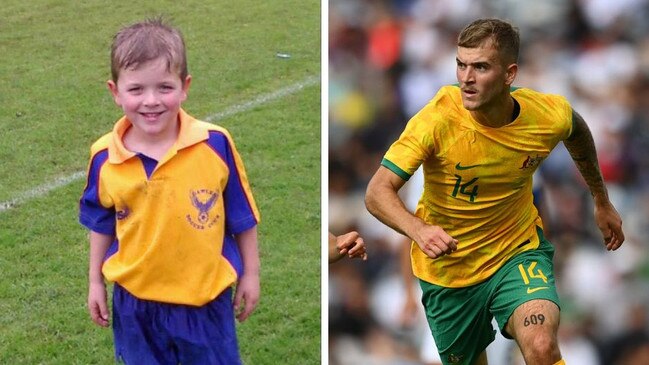
A star junior of the Gawler Eagles. McGree joined his local club, 44 km north of Adelaide, as a four-year-old after the town’s local Australian Rules footballer team was full.
He remained at the club for eight years and then moved to Adelaide United as a youth player to try and take his football to the next level.
In 2016, he made his debut for the Adelaide United senior side at age 17. Rylee’s father David instilled in his son to stay loyal and respectful to his local club until he was ready to go and play at a higher level.
The McGree’s remain highly respectful of their local club to this day where David asked the club for a Gawler Eagles hat so that he could wear it during the World Cup in Qatar while watching his son live.
McGree’s junior coach for eight years Chris Hodgen said “he just wanted to play” and “needed to run because he had a lot of energy and he just needed to get out and do something.”
Hodgen was his coach for much of his time at the Eagles where began as an under six. McGree enjoys coming back to Gawler, on the doorstep of the Barossa Valley wine region, when he can to visit his family and friends.
Aaron Mooy – Carlingford Redbacks, NSW

Perhaps one of Australia’s most prodigious talents with the ball at his feet, Aaron Mooy kicked off his footballing career running around for Carlingford Redbacks in Sydney’s north.
After impressing as a young player, Mooy moved onto the football factory at Blacktown City, before being selected to take part in the football program at the NSW Institute of Sport at 14.
It was here that NSWIS coach Kelly Cross – currently the youth director at Sydney FC – first caught a glimpse of the young Mooy.
“He’s one that you looked at and said that there’s potential there,” says Cross. “He wasn’t a standout. He was a bit smaller, he didn’t appear to be quick or explosive at that point.
“But he was very good with the ball and had superb vision for such a young player. He could see killer passes and play them with both feet.”
In fact, it was more than just his passing and touch that got Cross’ attention.
In one of Mooy’s first sessions with NSWIS, Cross took part in one drill and was drawn into a 50-50 with the skinny little Mooy after being given an underhit pass.
“As I got there, Aaron shut me down and put me on my arse. 14 and a half, first session, that’s how you make yourself known to the coach! So I called him ‘Butcher’ from then on.”
Mooy has since gone on to have one of the most celebrated careers of the current crop of Socceroos, playing for Huddersfield Town and Brighton in the English Premier League , while he currently finds himself playing under former national team boss Ange Postecoglou at Celtic.
And while Mooy certainly has bulked up and filled out since his first day at NSWIS as a skinny little 14-year-old, some 16 years later, Cross still sees similarities in the way he plays.
“When I see him play I see his strengths now are what his strengths were back then.”
Forwards
Martin Boyle – Lewis United, Scotland

A late scratching from the squad after succumbing to a knee injury, Boyle will remain with the squad in Qatar to help with team morale.
He is another one of the Socceroos’ Scotland-born brigade, who qualifies for the green and gold through his Sydney-born dad Graeme.
The 29-year-old started his junior football in Aberdeen in Scotland’s north-east. It was here, while playing for local side Lewis United, that Ken McKenzie first came across a 14-year-old Boyle.
“He was a likeable rogue, if you like. He was lively, one of the boys. A likeable lad, who enjoyed life and had fun and so on, as you do,” says McKenzie.
Not just a likeable lad, he was pretty popular with what he could do on the pitch as well.
“He was always a good player, he was a natural goalscorer, he obviously had pace which helps as well,” says McKenzie.
“But beside that, he was always keen to develop his game. He deserves the recognition he’s getting now, because he did work at it.”
McKenzie added: “He was never a superstar in the younger age groups, but there was definite steady improvement all the way through. He was keen to learn.”
After a couple of seasons at Lewis United, Boyle was then picked up by Scottish third division side Montrose, then eventually onto Premier League clubs Dundee and Hibernian.
After representing Scotland at under 16 and schoolboy level, in 2018 Boyle answered the call from Socceroos boss Graham Arnold, and has quickly become one of Australia’s most potent attacking weapons.
Forever keen to learn, if Boyle needs any critiquing, he needs to look no further than home. His wife, Rachael Small, who grew up in Aberdeen and went to the same school as Boyle, is a professional footballer herself, having represented Scotland 43 times.
And just like all likeable rogues, Boyle – who plies his trade with Hibernian in the Scottish Premier League – certainly hasn’t forgotten where he came from and who helped him along the way.
“Martin’s kept in touch with me,” says McKenzie. “I’ve met him a few times when he’s been up in Aberdeen. He’s a good lad.”
Jason Cummings – Hutchison Vale, Scotland

He might have settled on the sunny beaches of NSW’s Central Coast, but Socceroos striker Jason Cummings’ journey to the World Cup started on very much the opposite of side of the world.
Born in Edinburgh, the 27-year-old – who qualifies to play for Australia through his Perth-born mum, Tracey – started playing his junior football with local club Hutchison Vale at the age of five.
It was here that he first came under the eyes of coach Thomas Smith.
“He was always a good leftie, he had a wonderful left foot,” says Smith. “He was a goalscorer, but he was also very much a team player – he played the pass if it was a better option than the shot.
“He just saw things so quick. He used to glide past players and was a great dribbler – he just had that knack with the football, that natural ability more than anything.”
This natural ability certainly didn’t go unnoticed. After spending five years in the youth academy of Scottish Premier League club Hearts, Cummings has had a rollercoaster career that has seen him play at Scottish clubs Hibernian, Rangers and Dundee, as well as English League One side Shrewsbury Town, where in 2020 he famously scored a brace as the team held Liverpool to a 2-2 draw in the FA Cup.
Perhaps almost as famous as his performances on the pitch are his exploits off it. Cummings – who goes by the nickname ‘Cumdog’ – has earned cult like status as one of the true characters of the game, with the 27-year-old seemingly resembling the archetypal Aussie larrikin, despite his thick Scottish accent.
But while many have celebrated his approach to life and football, Smith says there is a sense that many have held it against him along the way.
“He’s had to take some blows with his football career in Britain, I’d say. And I don’t think it’s because of his performances. I think there’s a perception that he doesn’t take his football seriously.”
But now, with ‘Cumdingo’ – as he has recently come to be known – fit and firing since moving to Australia, there is a small pocket of Edinburgh who’ll be cheering on the green and gold.
“He’s taken a few blows along the way, but he’s in the right country, with that sort of refreshing attitude towards life that he has, and I think he’s probably found the place he needs to be.”
Mitch Duke – Liverpool Rangers, NSW

If there was ever an example of determination and resilience, Mitch Duke is that.
Unlike the childhood prodigies that were bound to make it from the start, Duke was constantly told that he’d never amount to much as a footballer.
“Mitch was one who was always told that he was basically never going to be good enough. He struggled to make it for years,” says childhood friend Alex McCarren, who played junior football with Duke at the Liverpool Rangers.
Not particularly loved or wanted, Duke bounced around clubs as a junior before a chance meeting would ultimately change the course of his life.
Duke was 12, playing for Parramatta Melita, when talent scout Tony Basha came by to watch.
“I was watching the game with a friend of mine and this blond kid came on. I liked him. He did one thing and I said to my mate, ‘That guy’s a good player.’ But then the coach hooked him after eight minutes. I said, ‘Why’d they take him off?’ Anyway, his dad Bill happened to be in front of me and said, ‘That’s my son – and it happens all the time.’”
Basha, who had recently set up the Australasian Soccer Academy, took the young Duke under his wing. He saw the potential, even if others didn’t. In fact, Duke was famously turned away by his own uncle while trialling at Sydney FC.
“He had a lot of knockbacks, that’s for sure. His own uncle knocked him back,” says Basha, who says he had to beg to even get Duke a trial with Tony Walmsley at the Central Coast Mariners’ youth academy.
“I rang Walmsley and he said, ‘Oh no, Tony. I know Dukie, he’s not good enough.’ I had to beg him, to be honest. I begged him. ‘Please, I know he’s good enough, trust me.’”
Basha’s – and Duke’s – persistence finally paid off. The Mariners did end up signing Duke, who a couple of years later made his A-League debut under none other than current Socceroos coach Graham Arnold.
Since then Duke has gone from strength to strength, developing into one of Australia’s unsung heroes with a career that has seen him play in Japan and for his hometown club the Western Sydney Wanderers.
And as the Socceroos prepare for their fifth-straight World Cup campaign, many will be looking towards Duke to hit the back of the net.
It seems Australia is starting to see what Basha knew all along.
Craig Goodwin – Munno Para City, South Australia

Goodwin began his football journey with Munno Para City, a club situated 30 km north of Adelaide. After achieving success as a junior, he moved closer to Adelaide and signed to play with the Adelaide Raiders who are in the South Australian Super League. Goodwin trialled for the Adelaide United youth team but was cut leading him to move to Melbourne as a 20-year-old to play with Oakleigh Cannons. After one season A-League club Melbourne Heart swooped on his talent and signed him where he made his professional debut in his first year.
Matt Leckie – Brimbank Stallions, Victoria
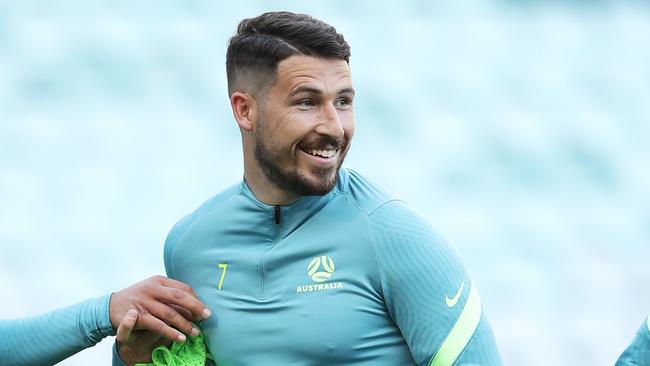
Growing up in Melbourne’s west, Leckie first aspired to be an AFL footballer although at age 11, a change to a school in Sunshine North with a more multicultural student body and close friends led him down the path of football. He played at Brimbank Stallions since until he was 16 which was when he decided to move to Bulleen Lions where he was eventually picked up by A-League club Adelaide United in 2009. Thomas Galea who played alongside Leckie from under 13’s to under 15’s at the Stallions said the attributes Leckie has were “very evident” from his junior days with his “lightning” speed, strength and work ethic. Galea said “he was always fighting for every ball” and “he could never give up” with his work ethic. He was “someone that just loved playing whether it was one-on-one games or his love of FIFA... he was also very good at FIFA.” The Stallions junior team which Leckie played in was a strong side that also featured current South Melbourne captain Bradley Norton.
Awer Mabil – St Augustines, South Australia

Mabil began his soccer journey at age five in the Kenyan refugee camp where he would play barefoot and use rolled up socks as the ball.
Five-years later he moved to Australia with his family where they settled in Adelaide.
Mabil played his junior soccer for three different clubs in the northern suburbs of Adelaide including St Augustines, Playford City and Salisbury East.
For some time, he played with fellow Soccer Thomas Deng where the pair became close friends and good training partners.
He moved closer to Adelaide in 2012 to play senior football for Campbelltown City in the NPL South Australia competition.
After an impressive debut senior season as a 17-year-old where he showed good pace and dribbling skills for Campbelltown, he was signed by A-League club Adelaide United and made his professional debut in 2013.
Jamie Maclaren – Green Gully, Victoria

Maclaren’s journey to becoming one of the A-League’s most exciting strikers started in the north west of Melbourne when he joined Sunbury United at age five.
In 2003, Maclaren joined Green Gully as a 10-year-old playing juniors there until he was 15.
He then joined English Football League under 16 team Blackburn Rovers after being invited by the club.
In his first trial match he scored two goals against Derby County‘s under-16 squad, followed by a hat-trick against Manchester United.
The strong performances resulted in a contract offer where he spent the four seasons at the club.
In 2013, Maclaren returned to Australia and joined Perth Glory where his illustrious A-League journey began.
Garang Kuol – Goulburn Valley Suns, Victoria

Rising star Garang Kuol was born in Khartoum, South Sudan. In 2010 at six years of age, Kuol and his family arrived in Australia as refugees, settling in northern Victoria country town Shepparton.
Kuol’s love of football alongside his brothers led them to join local club Goulburn Valley Suns where they showcased unveiled their incredible talent to the wider community.
Suns coach Craig Carley said it was “absolutely phenomenal watching the Kuol kids” recalling “matches where Alou, Teng and Garang were the front three in games.”
He described them as “brilliant kids” brought up in “a real humble family.”
Garang, the first and potentially not the last in the family to represent the Socceroos, would sometimes play three games a day throughout his juniors, starting with the under 14s and playing in higher age groups later in the day. Garang played under 18s when he was 14 and starting training with the seniors and playing in the under 21s when he was 15.
One moment that stands out for Carley was when he invited Garang at age 15 to play in a preseason game against a stacked Dandenong City side who just signed three former A-League players including Melbourne Victory ex-captain Adrian Leijer as their centre back.
Carley remembers how Garang “tore Adrian Leijer to pieces for the 20 minute cameo” he played similar to what he is doing now on the bigger stage of the A-League. Kuol’s skills eventually attracted A-League club Central Coast Mariners, who he signed with in 2021 as a 16-year-old. Garang’s brother Alou was also playing at the Mariners.
Garang made his debut for the club by the end of the 2021 in an FFA cup game where he scored a goal seven minutes after coming on. In his first seven A-League appearances, Kuol scored four times.
The early signs of the promising youngster led English Premier League giant Newcastle to offer him a contract. On September 21, Kuol signed a deal with Newcastle who he will join on January 1 next year.
Marco Tilio – APIA Leichhardt
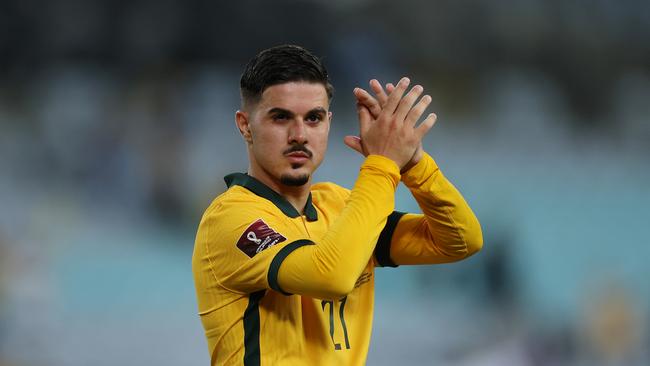
A replacement for the injured Martin Boyle, it is a case of déjà vu for Tilio, who was also a late call-up for the Olyroos’ Japan 2020 campaign after the International Olympic Committee made a late decision to allow countries to add an extra four players to their squad.
Although playing for Melbourne City in the A-League, the 21-year-old’s football career began in Sydney.
Tilio played for the Leichhardt Saints before moving onto the youth system at the legendary APIA Leichhardt.
He then moved on to Sydney Olympic before getting his chance with hometown club Sydney FC.
And while Boyle’s late withdrawal is a blow for the Socceroos, Tilio will be hoping that he gets a chance to prove his worth in Qatar, just like he did for the Olyroos last year.




